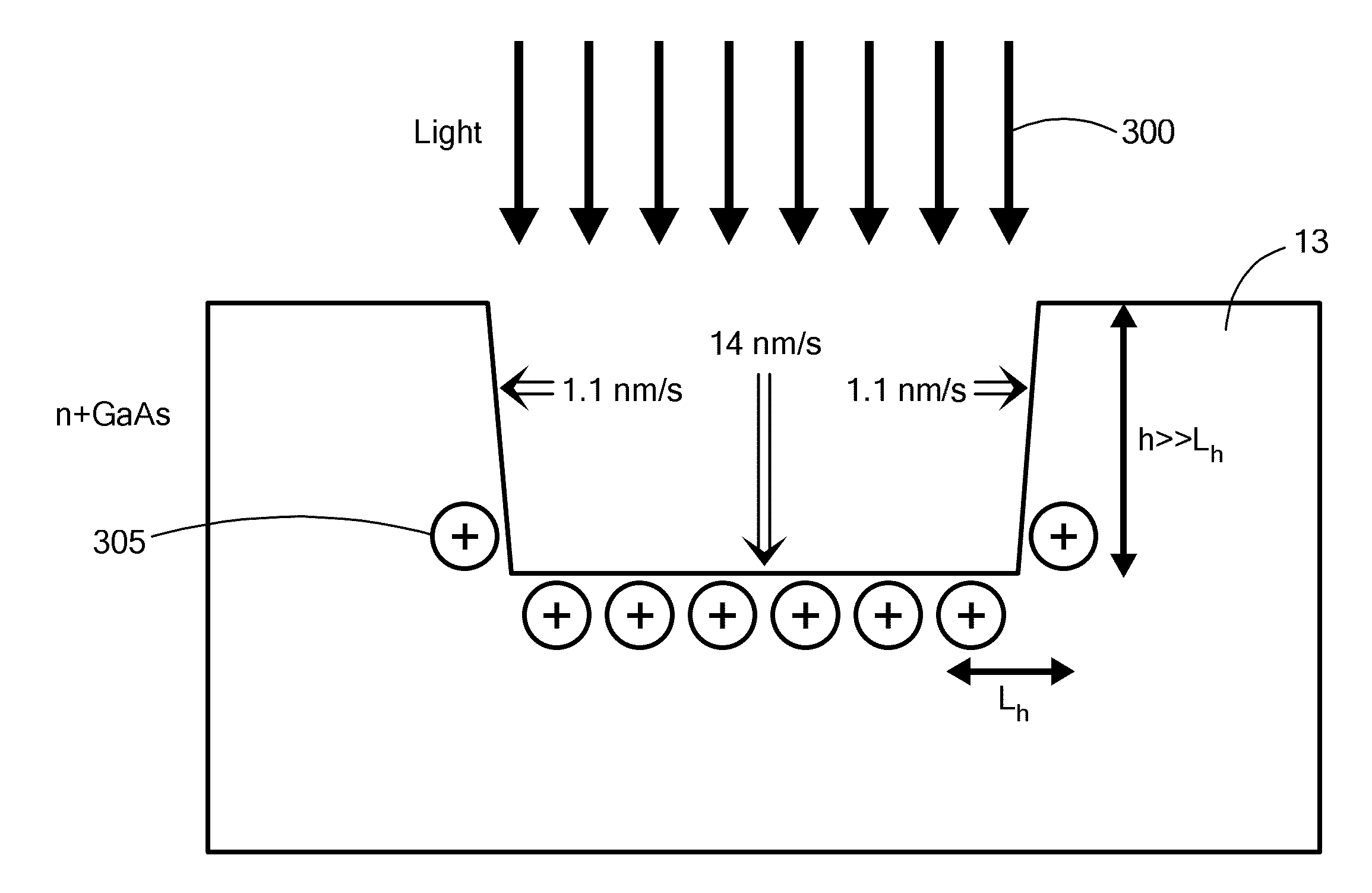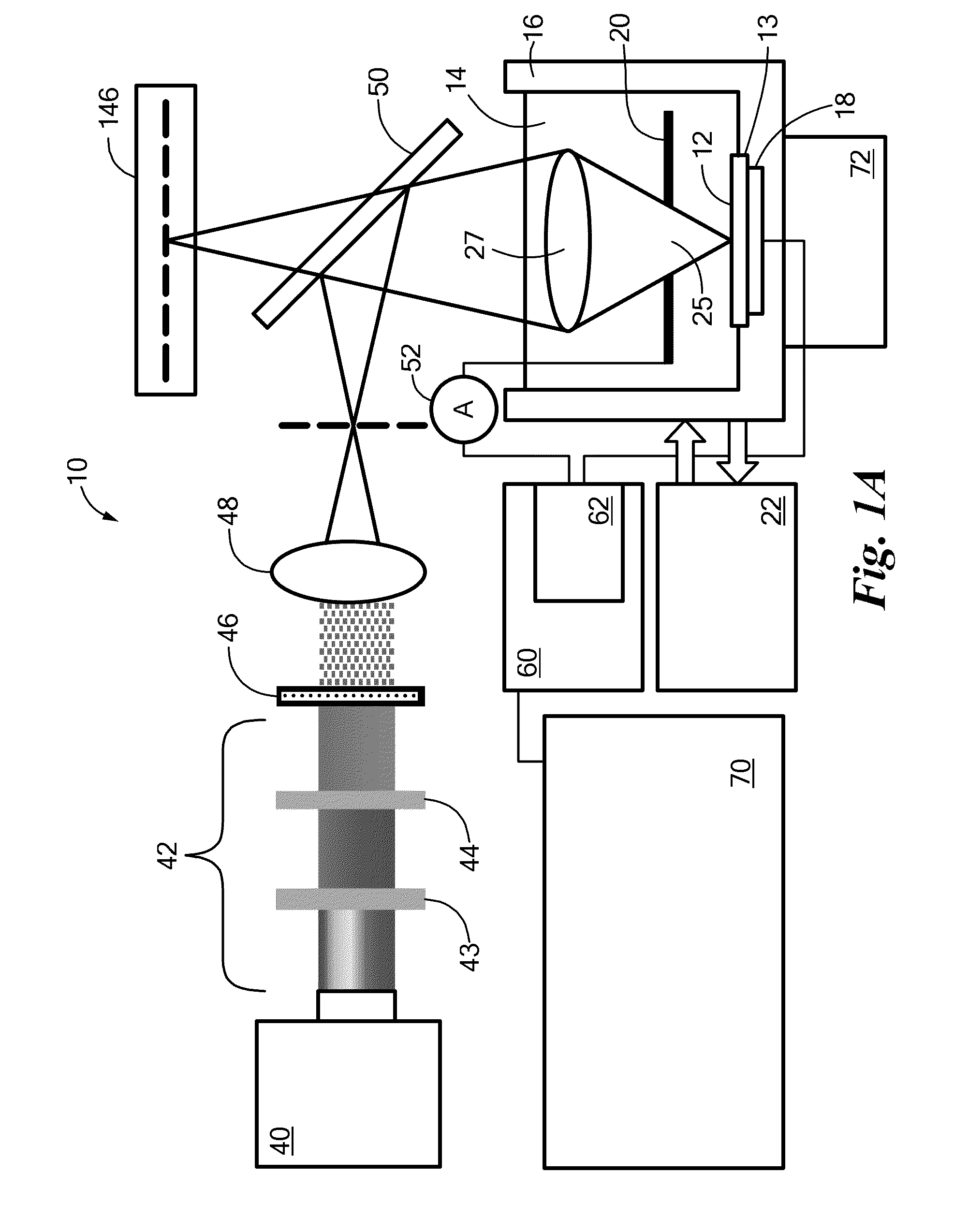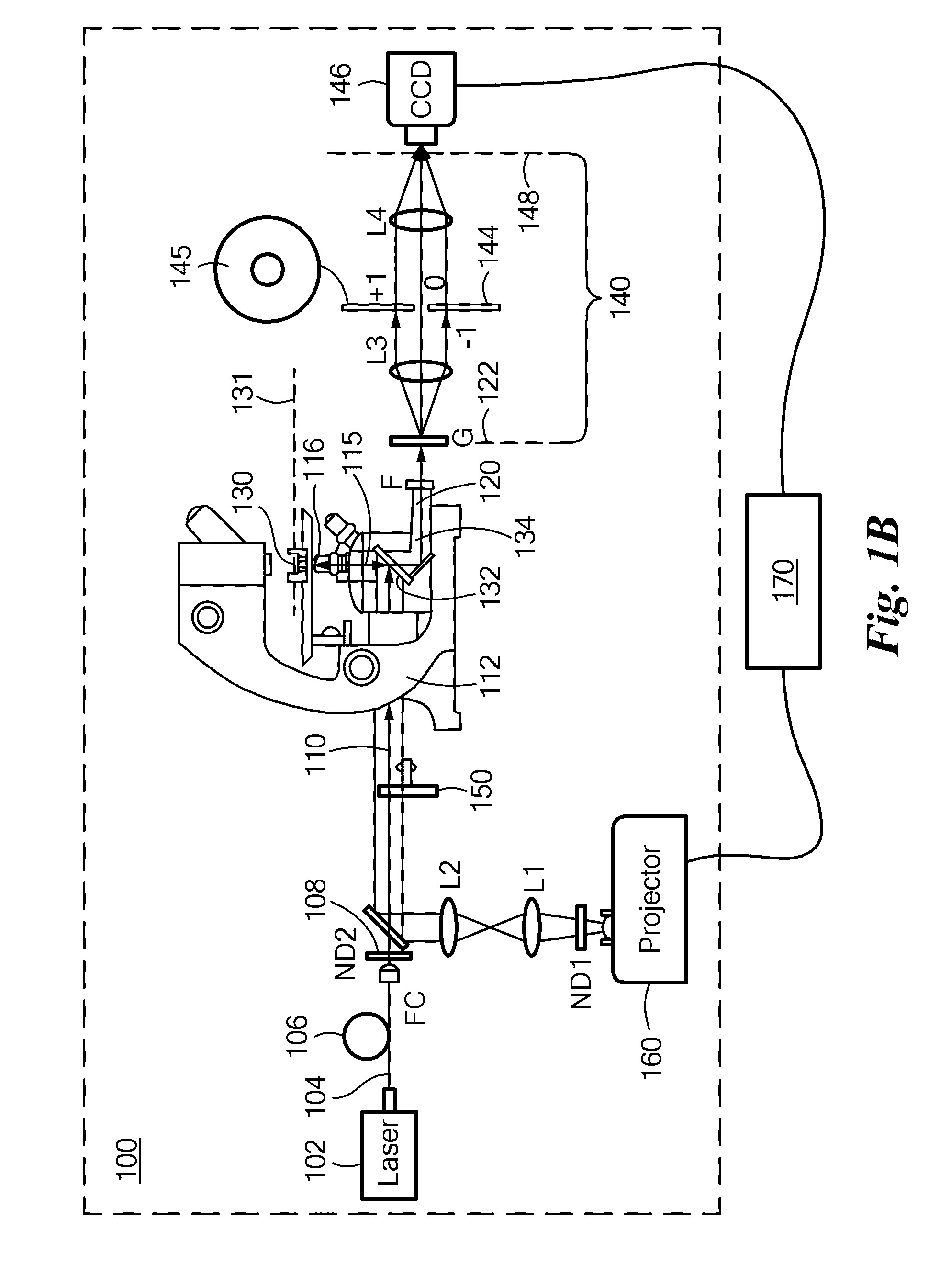Spectrally and Temporally Engineered Processing using Photoelectrochemistry
a technology of photoelectrochemistry and spectrally and temporally engineered processing, which is applied in the direction of microstructured devices, semiconductor/solid-state device testing/measurement, instruments, etc., can solve the problems of difficult to achieve three-dimensional structures with multiple heights using conventional photolithography and etching, static gray-scale masks, and high cost, so as to reduce the resistance of an ohmic contact
- Summary
- Abstract
- Description
- Claims
- Application Information
AI Technical Summary
Benefits of technology
Problems solved by technology
Method used
Image
Examples
example i
Unprocessed Wafer
[0128]In accordance with embodiments of the present invention, epi-DPM may provide accurate topographic height maps relative to other points in the image and therefore may be advantageously made insensitive to any common mode motion of the sample. To characterize the spatial and temporal path length noise of the epi-DPM method described herein, a plain, unprocessed n+ GaAs wafer (heavily n-doped) was imaged repeatedly in succession. The successive imaging yielded a time-lapse series of images containing 256 frames at 8.93 frames / s. A 10× objective (NA=0.25) provided a lateral resolution of 1 μm, with a field of view of approximately 160 μm×120 μm. After recovering the height images, a quadratic fit of each individual image was subtracted off. The linear portion of the fit corrects for the tilt of the sample and the angle of interference in camera plane 148 while the quadratic portion corrects for the quadratic phase front of the beam across the field of view. After ...
example ii
Photochemical Etching of Arrays of Microlenses
[0129]As an example of photochemical etching capabilities, epi-DPM was used to image microlens structures fabricated by photochemical etching. Light produced by light projector 160 (EPSON Powerlite S5 EMP-S5, for example) in the illumination path, such that gray-scale or color images delivered by a computer can be mapped onto the sample, as shown in FIG. 1B. Individual microlenses were fabricated using a digital image as an optical mask, which may be implemented by a spatial light modulator (SLM), for example, in order for the mask to be programmable and amenable to modification in real time. FIG. 5A shows a pattern of specified intensity distribution (otherwise referred to as mask 500) delivered by projector 160 to sample plane 131 (shown in FIG. 1B), while FIG. 5B is the corresponding epi-DPM image of the resulting fabricated microlens. Projector 160 may also deliver a pattern of both specified intensity distribution and specified colo...
PUM
| Property | Measurement | Unit |
|---|---|---|
| depth | aaaaa | aaaaa |
| depth | aaaaa | aaaaa |
| dark etch rate | aaaaa | aaaaa |
Abstract
Description
Claims
Application Information
 Login to View More
Login to View More - R&D
- Intellectual Property
- Life Sciences
- Materials
- Tech Scout
- Unparalleled Data Quality
- Higher Quality Content
- 60% Fewer Hallucinations
Browse by: Latest US Patents, China's latest patents, Technical Efficacy Thesaurus, Application Domain, Technology Topic, Popular Technical Reports.
© 2025 PatSnap. All rights reserved.Legal|Privacy policy|Modern Slavery Act Transparency Statement|Sitemap|About US| Contact US: help@patsnap.com



